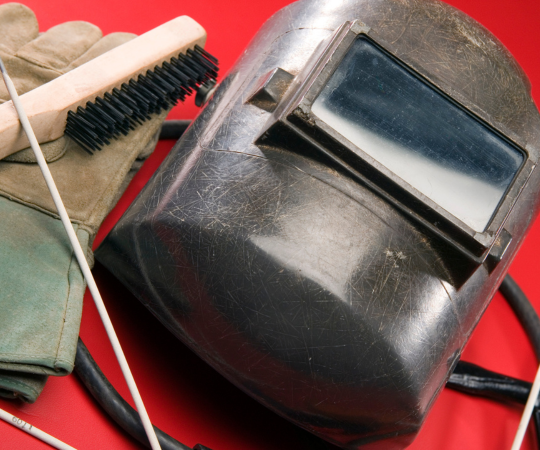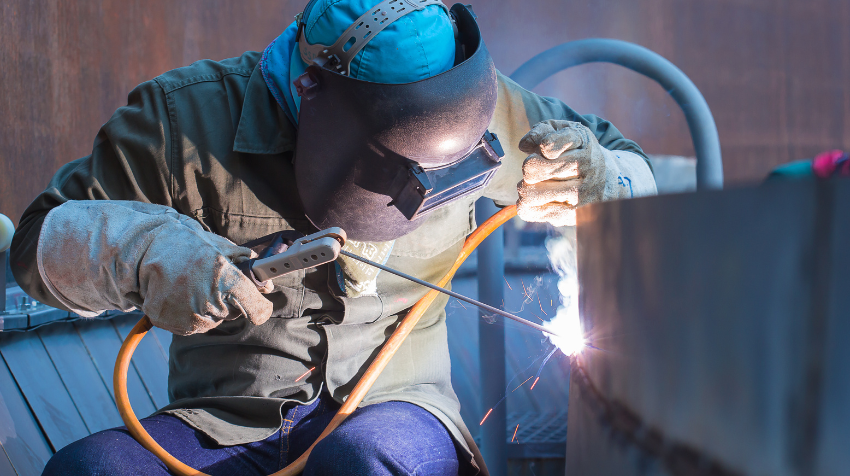Unveiling Welding Safety Gear: A Comprehensive Guide to Effective Protection and Equipment Selection
Did you know that in 2019, there were over 6,000 welding-related injuries reported to the Occupational Safety and Health Administration (OSHA)? That’s right – a whopping 6,000 people who were injured while working with welding equipment.
Welding is an important part of many industries, but it can also be dangerous if proper safety precautions aren’t taken. That’s why it’s crucial to understand the importance of welding safety gear. The right gear can protect you from burns, sparks, and other hazards associated with welding.
But with so many options available on the market, it can be overwhelming to choose what works best for you. In this article, we’ll demystify welding safety gear by discussing what works and what doesn’t, as well as providing recommendations for high-quality gear and tips for maintenance and inspection.
So whether you’re a seasoned welder or just starting out, read on to learn how to protect yourself while on the job.
Understanding the Importance of Welding Safety Gear
You need to understand why wearing proper safety gear is crucial if you want to keep yourself safe while welding. Neglecting this important aspect of the job puts you at risk for serious injury.
Welding involves high temperatures, bright light, and sparks that can cause burns, eye damage, and respiratory problems. The importance of protective gear cannot be overstated in preventing these hazards.
There are many benefits to wearing welding safety gear. Not only does it protect you from harm, but it also increases your comfort level during work. Many types of safety gear are designed with ergonomic features that reduce strain on your body and allow for greater flexibility in movement. Additionally, proper safety gear can increase productivity by reducing the amount of time spent on unnecessary breaks due to discomfort or injury.
Understanding the importance of welding safety gear is the first step towards ensuring your own wellbeing on the job site. Now let’s take a look at some common types of welding safety gear.
Types of Welding Safety Gear
Get ready to suit up like a superhero with various types of armor that protect you during welding. Welding safety gear comes in all shapes and sizes, each designed to keep you safe from harm.
The most common types of welding safety gear include helmets, gloves, jackets, aprons, and boots. These items are made from different materials depending on their intended use. Helmets are usually made of lightweight but durable materials such as polycarbonate or nylon. They protect your head and eyes from the bright light produced by welding.
Gloves are typically made of leather or synthetic materials that can withstand high temperatures. Jackets and aprons come in flame-resistant materials such as cotton or leather to prevent burns caused by sparks and flying debris. Finally, boots are usually made of steel-toed leather to protect your feet from heavy objects that may fall on them.
When choosing the right type of welding safety gear for your needs, there are several factors to consider. These include the level of protection required for the job at hand, the duration of exposure to hazardous conditions, and personal comfort preferences.
Keep these factors in mind when selecting your gear so you can work safely without sacrificing comfort or mobility.
Factors to Consider When Choosing Welding Safety Gear
Choosing the right welding safety gear involves considering factors such as the level of protection needed, duration of exposure to hazards, and personal comfort preferences. When choosing between durability versus affordability, it’s important to remember that investing in high-quality safety gear can save you money in the long run by reducing the risk of injury and prolonging the life of your equipment.
Similarly, when deciding between comfort versus protection, it’s essential to prioritize both aspects for optimal performance on the job. Look for safety gear with adjustable features that allow for a customized fit and consider materials that offer breathability without sacrificing protection. Another factor to keep in mind is the type of welding you’ll be doing.
Different techniques and environments require different levels of protection, so be sure to match your safety gear accordingly. Additionally, if you work in an industry with specific regulations or standards for protective equipment, make sure your gear meets those requirements.
By taking these considerations into account when selecting your welding safety gear, you can ensure that you are adequately protected while also staying comfortable and efficient on the job. Moving forward into recommendations for high-quality welding safety gear…

Recommendations for High-Quality Welding Safety Gear
In this section, we’ll show you some great options for welding safety gear that will keep you protected and comfortable on the job. When it comes to choosing between comfort and protection, it’s important to find a balance that works for you.
Here are our top recommendations for high-quality welding safety gear:
- Miller Electric Digital Elite Welding Helmet: This helmet offers both comfort and protection with its lightweight design and auto-darkening lens that adjusts to different welding environments.
- Lincoln Electric Viking 3350 Welding Helmet: Another great option is this helmet from Lincoln Electric, which offers a wide viewing area and excellent optical clarity while still providing ample protection.
- Tillman Cowhide Welding Jacket: For body protection, this cowhide jacket from Tillman is a popular choice among welders due to its durability and heat-resistance.
- Black Stallion FR Cotton Welding Jacket: If comfort is your main concern, consider this FR cotton jacket from Black Stallion which provides breathability without compromising on safety.
With these recommended brands in mind, you can choose the best welding safety gear that suits your needs and preferences. But remember, even the best gear requires proper maintenance and inspection to ensure maximum effectiveness in protecting yourself on the job.
As we move into discussing maintenance and inspection of welding safety gear, it’s important to remember that even the highest quality gear needs regular upkeep to continue providing optimal protection.
Maintenance and Inspection of Welding Safety Gear
To ensure that your welding safety gear is always in top condition, you’ll need to know how to properly maintain and inspect it.
Start by checking the cleaning procedures for each piece of equipment. For instance, helmets should be wiped clean with a soft cloth after every use to prevent dust and debris from accumulating on the lens. Meanwhile, gloves need to be washed regularly to remove sweat and other contaminants that can cause wear and tear.
Aside from cleaning procedures, it’s also important to follow replacement schedules for your welding safety gear. This will help you avoid common wear and tear issues such as frayed cords or cracked lenses that could put you at risk while working.
Troubleshooting tips are also handy if any problems arise during use. For example, if you notice fogging inside your helmet, check if there are any cracks on the lens or if the ventilation system needs cleaning.
By consistently maintaining and inspecting your welding safety gear, you not only extend its lifespan but more importantly protect yourself from potential hazards in the workplace.

Frequently Asked Questions
Is welding safety gear necessary for all types of welding projects?
You absolutely need welding safety gear for all types of welding projects, whether you’re a professional welder or a DIY enthusiast.
Welding can be a dangerous activity and without the right gear, you could seriously injure yourself. Some types of welding that require safety gear include MIG, TIG, stick welding, and plasma cutting.
While it might seem expensive to invest in quality safety gear, there are cost-effective options available such as auto-darkening helmets and leather gloves, which provide excellent protection.
Don’t take any chances when it comes to your safety – always wear proper welding safety gear!
Can welding safety gear be reused or should it always be replaced after each use?
When it comes to welding safety gear, it’s important to consider both cost effectiveness and sustainability. Reusing gear can save money in the short term, but may not be the safest or most sustainable option.
Over time, wear and tear can compromise the protective qualities of equipment such as gloves, goggles, and respirators. Additionally, if the gear has been exposed to chemicals or hazardous materials during use, it may not be safe to reuse unless properly cleaned and inspected.
Ultimately, replacing safety gear after each use ensures maximum protection while also promoting a culture of safety in your workplace or project team.
How often should welding safety gear be inspected and maintained?
To ensure your welding safety gear is always effective, it’s important to inspect and maintain it regularly. The frequency of inspection depends on the type of gear you have and how often you use it.
For example, helmets should be checked before each use for any cracks or damage that could compromise their protective capabilities. Other gear such as gloves and jackets may only need to be inspected every few weeks or months depending on usage.
Proper maintenance involves keeping your gear clean and storing it in a dry place away from sunlight when not in use. With regular inspections and proper maintenance, you can rely on your welding safety gear to protect you during each use.
Are there any specific regulations or guidelines for welding safety gear in different industries or countries?
When it comes to welding safety gear, there are specific regulations and standards that vary depending on the industry and country. These requirements ensure that workers are protected from potential hazards associated with welding, such as burns or eye damage.
It’s important to note that industry-specific requirements may be more stringent than general guidelines. To comply with these regulations, employers must provide appropriate equipment for their workers and ensure that it’s regularly inspected and maintained.
By adhering to these standards, workers can feel confident in their safety while on the job.
Can welding safety gear be customized or should it always be purchased as is?
When it comes to welding safety gear, you may be wondering if it’s possible to customize your equipment or if you should always purchase it as is. The good news is that there are customization options available for welding safety gear, such as adding extra padding or adjusting the fit to better suit your needs.
However, there are also some potential drawbacks to customizing your gear, such as potentially voiding any warranties or compromising the level of protection provided by the original design. Ultimately, deciding whether or not to customize your welding safety gear will depend on your individual needs and preferences.
Conclusion
Congratulations! Now that you’ve gained a deep understanding of welding safety gear, it’s time to put your knowledge into practice.
Remember, wearing the right safety gear isn’t just a recommendation but a necessity. According to the Occupational Safety and Health Administration (OSHA), over 500,000 workers in the US are at risk of exposure to harmful fumes and radiation from welding, cutting, and brazing operations. Hence, investing in high-quality welding safety gear can go a long way in protecting yourself from these hazards.
When it comes to choosing welding safety gear, there are several factors that you need to consider such as comfort, durability, and level of protection. Always opt for equipment that meets or exceeds industry standards such as ANSI Z87.1 for eye protection and NIOSH-approved respirators for respiratory protection. Additionally, make sure that you regularly inspect and maintain your equipment to ensure its effectiveness.
In conclusion, demystifying welding safety gear has helped us understand what works best in terms of protecting ourselves while working with hazardous materials. With proper research and investment in high-quality products that meet industry standards, coupled with regular maintenance practices, we can guarantee our health and safety while on the job site or workshop.
Stay safe out there!
Related Source
Demystifying Welding Safety: Essential Tips for a Secure Work Environment

